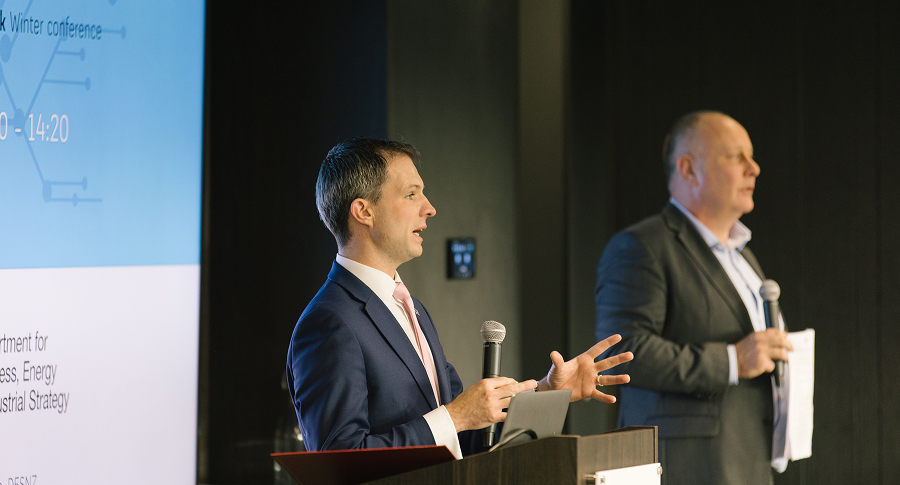Purpose and scope of the SSEP
The Strategic Spatial Energy Plan (SSEP) will set out a strategic blueprint for GB’s energy system, addressing the spatial requirements for future electricity generation and storage infrastructure. Its overarching goal is to create a coordinated approach to energy planning, ensuring that the transition to low-carbon energy is both efficient and aligned with national goals for net zero by 2050.
The first version of the SSEP will be a GB-wide spatial energy plan mapping potential locations, quantities and types of electricity and storage infrastructure and hydrogen assets. This will be modelled across a range of plausible futures, considering public views, environmental considerations, known constraints and cross-sectoral demands on land and sea. It is expected that the SSEP will be updated regularly and in the future could include other types of energy.
We are pleased to see that the governance of the SSEP ensures that will be a collaborative effort. It includes:
- A committee, overseeing the strategic direction of the plan, involving representatives from NESO, Ofgem and UK, Scottish and Welsh governments
- Advisory groups for devolved administration, UK government, expert and analytical evidence.
Pathway options
NESO has been tasked with creating multiple ‘pathway options’. These represent various scenarios for infrastructure development, considering factors like energy demand, environmental impacts and technological advancements. NESO will develop four to six pathways, ranging from ‘low-regret’ options – designed to be robust across most future scenarios – to others that include additional infrastructure, tailored to specific but less certain futures.
After consulting with the SSEP governance groups, including stakeholders from Scotland and Wales, NESO will present these options to the UK Energy Secretary. The selected pathway will then undergo further assessments, such as the Habitats Regulations Assessment (HRA) and Strategic Environmental Assessment (SEA), public consultation and finalisation.
Integration with planning systems
The SSEP is intended to complement existing planning frameworks across GB, providing a more strategic approach through setting out a higher-level guide on the likely shape of the future energy system. It will aim to provide clarity on where energy infrastructure is needed and how this aligns with broader land use priorities.
It is important to note that the SSEP will not make site-specific recommendations, nor will it prescribe or authorise individual projects. Instead, it will offer guidance to their spatial characteristics from an energy perspective. Key areas of integration with our current planning system include:
- Incorporation into planning policy. The stated intention is that the SSEP will become part of the framework of planning systems across GB. It is noted that there will be an exploration of how or whether the National Policy Statements (NPS) may need to be amended in the future. However, it is stated that any updates to the NPS would only happen once the SSEP has been produced and endorsed by the UK government. Similarly, following publication of the SSEP, the Scottish and Welsh governments will consider whether it would be appropriate to amend their National Planning Policies and/or National Marine Plans.
- Transmission planning. The SSEP’s outputs will directly feed into, and be published in time for, the Centralised Strategic Network Plan (CSNP) for transmission network infrastructure which NESO is also developing.
- Cross-sectoral considerations. While focused on energy, the SSEP commissioning document acknowledges the need to balance energy infrastructure with other land uses including food production, transport, water supply, nature recovery, fisheries, tourism and military. This is positive to see, although notable that housing isn’t specifically mentioned in this list.
Involving the public
It’s very positive to see that the commissioning document recognises the need for community views to be at the heart of the SSEP and for the importance of public support. The commissioning document sets out that there will be both an engagement process as the SSEP develops and a consultation process once the pathway has been chosen.
It’s also positive to see that the approach to consultation is expected to include a range of methods with suggestions including roundtables, workshops, targeted events, online seminars, surveys and the use of technology and social media to reach a wide audience. At Regen we will be following this process to ensure that the consultation process reaches a wide range of people.
What’s next?
The next step will be NESO developing a methodology, clearly setting out how the SSEP will be developed and consulted upon. This will be produced in consultation with UK, Scottish and Welsh governments and Ofgem, taking views through the governance groups. The methodology should be developed by the end of 2024.
At Regen we will keep engaged and updated with the process. Key updates for the planning industry will be discussed in our Regen members working group on planning.














